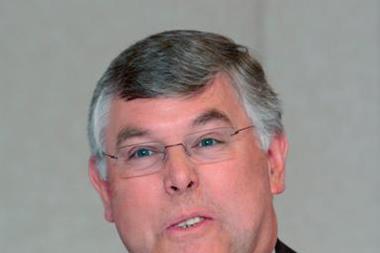The association has put together a career structure model for risk managers
THE CURRENT economic recession and the lessons learnt by UK businesses have significant implications for Britain’s risk managers. AIRMIC is keen to ensure that its members are well placed to take advantage of the opportunities as well as ride out the downside.
John Hurrell, AIRMIC’s chief executive, explains: ‘When we had our council meeting in April we conducted a fundamental review of AIRMIC’s four strategic objectives and decided we needed to add a fifth – to put the AIRMIC member’s career at the heart of everything we do.’ This isn’t just a recession driven initiative. AIRMIC believes that there will be a significant growth in the risk management profession over the next two to three years.
Says Hurrell: ‘Talking to head hunters and risk management professionals, the evidence suggests that the time for risk management is here and we want to make sure our members are in the best position to win those high profile roles that are likely to emerge in the next two or three years.’ The association’s initiatives include putting together a career structure model which is being launched at this year's conference.
AIRMIC has identified what a successful CV looks like in terms of background, experience, etc, based on proven successful CVs over the last two or three years, and has analysed the progression steps in a successful risk management career. For example, the model will help those who are just entering the profession to plot their way to progress upwards.
The association has also introduced the AIRMIC Academy. ‘If like many risk managers you’re in a small department and, while your business is supportive, no-one in-house has the experience to offer you guidance and training, the Academy is a way of making knowledge available to you,’ says Hurrell.
The demand for this was such that, rather than wait for the conference, AIRMIC launched its Academy in April. ‘We’ve held two courses, both of which were sold out within two hours of being launched,’ comments Hurrell. He stresses that the whole career management issue will be an important area for AIRMIC going forward. ‘The launch of the career model template is just one step in that journey.’
Addressing the downside
While organisations may be planning a much stronger focus onrisk management in the future, economic circumstances mean that some are reducing their investment in risk management expertise in the short term. Some risk managers have been made redundant; more commonly, some large risk management departments are being reduced in size.
AIRMIC has responded by creating ‘reserve’ status membership for members who are between jobs so that they can still retain the networking and knowledge sharing benefits that
AIRMIC provides. Organisations with larger risk management teams who are seeking to reduce subscription costs can take advantage of AIRMIC’s provision of free membership for additional people where a team exceeds eight paid up members.
‘Essentially, we are working to ensure that existing AIRMIC members can retain their membership,’ explains Hurrell.
AIRMIC has also eliminated the charges for companies advertising risk management vacancies on the ‘members only’ part of its website. And it offers a facility whereby members who have been made redundant can get professional help with preparing their CVs.
Hurrell concludes: ‘These initiatives won’t stop when the recession comes to an end. We want to ensure our members are taken seriously in the board room and have the skills they need to compete successfully for those senior risk management roles which we expect to become available.’
The career model is available to members from the AIRMIC website


















